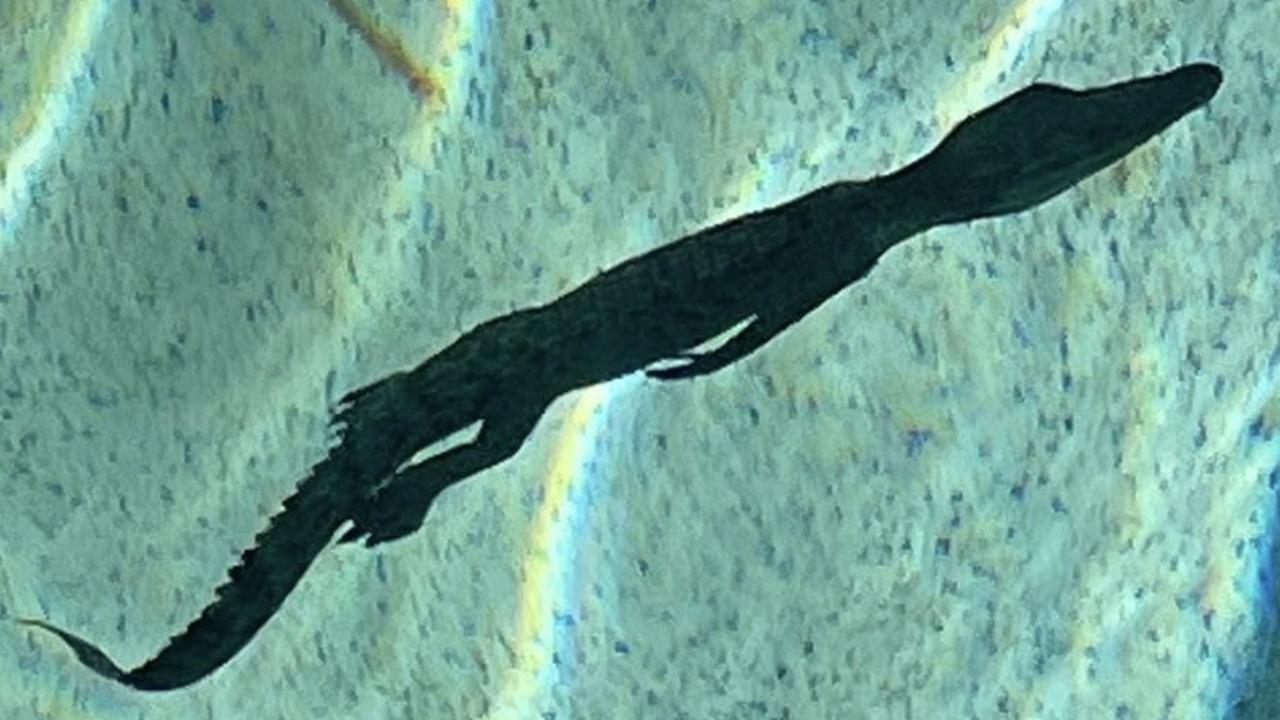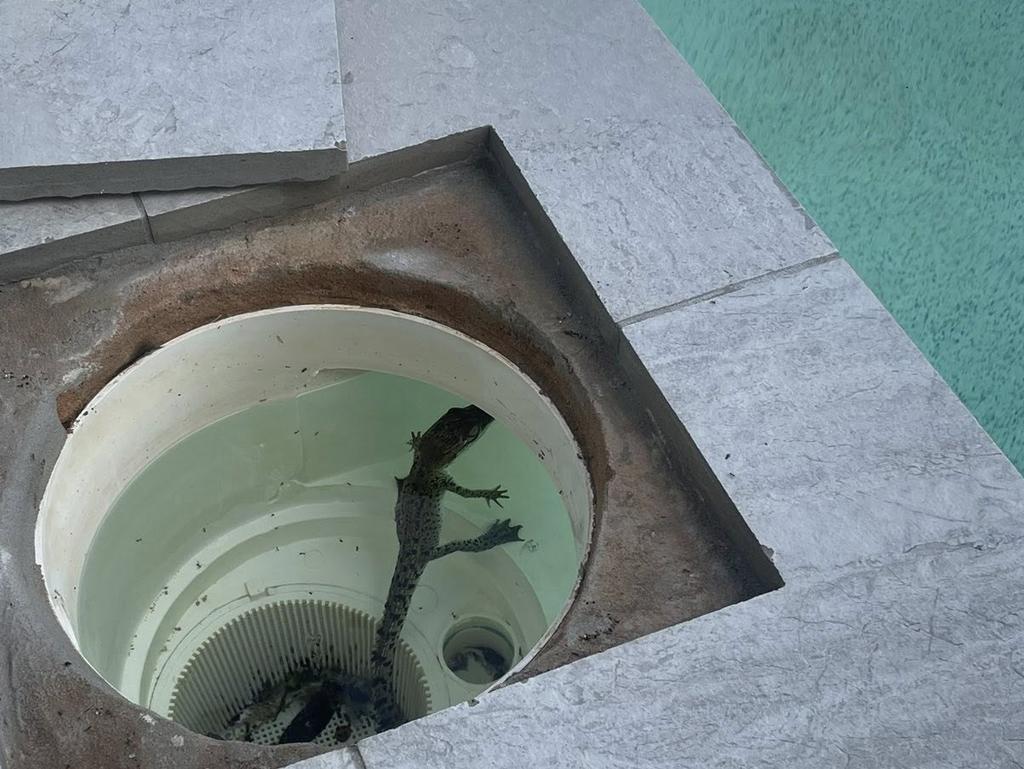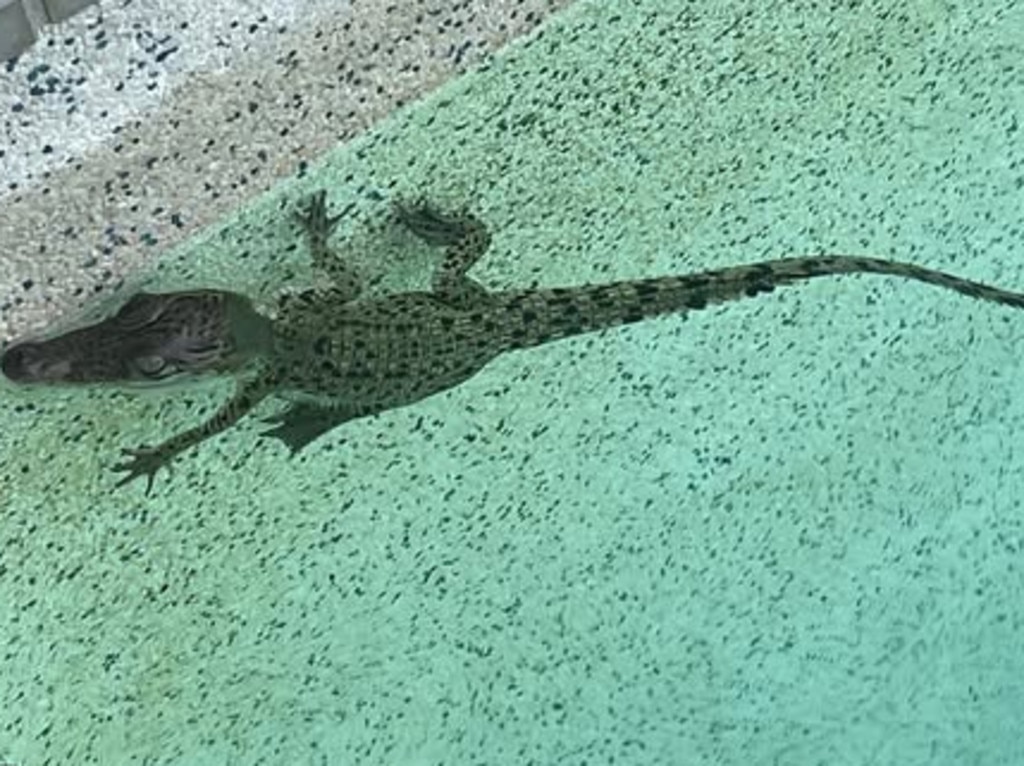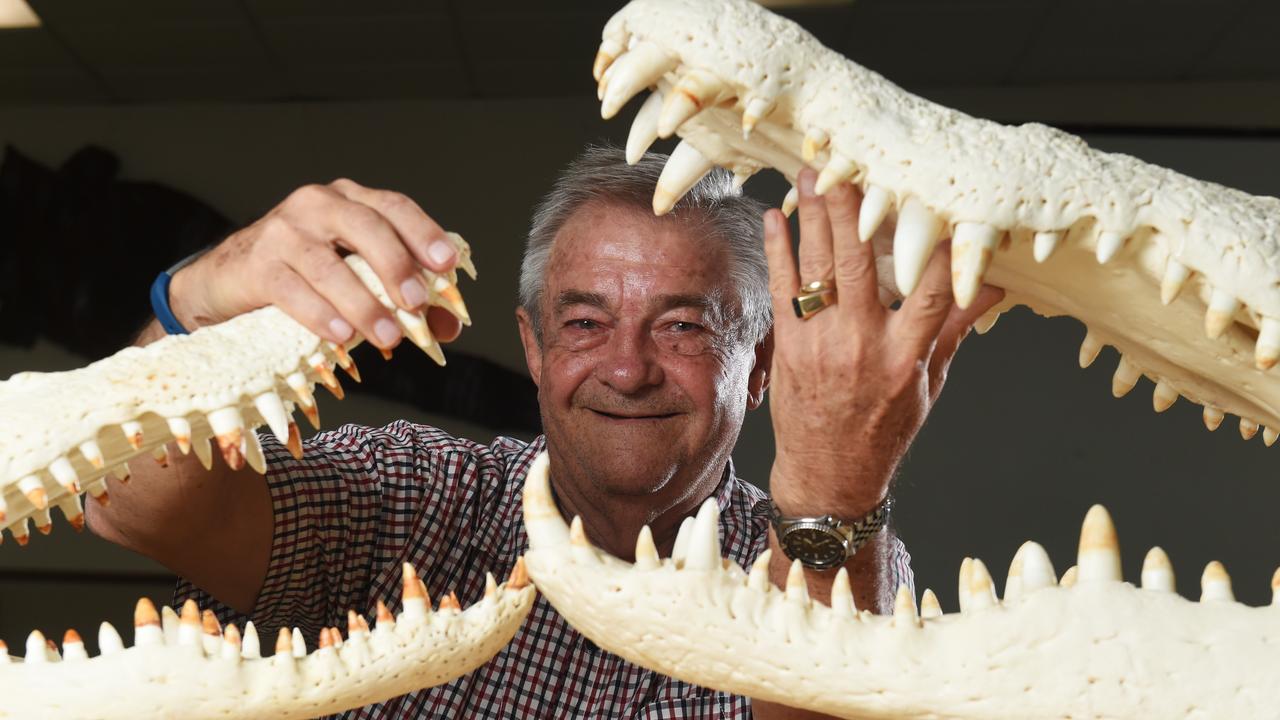Baby crocodiles have backyard adventures in separate NT pools
Two crocodiles in 48 hours were plucked from separate suburbs in Australia’s Top End as the roving young reptiles decided to cool off in a couple of backyard pools – would you take the plunge?

READING LEVEL: GREEN
Two juvenile* crocodiles have been plucked from backyard pools in as many days.
One homeowner spotted what he thought was a lizard cooling off in his pool on Mother’s Day.
The Northern Territory resident told the NT News that he was surprised when he realised it was in fact a baby croc.
“I have no idea where it came from,” the Palmerston local said. “We’re literally in the middle of our street, quite far away from nature.”
Territory crocodile expert Professor Grahame Webb said the photo taken poolside looked like the young reptile was a saltwater crocodile.

“It’s a baby saltie — probably about one to two months’ old,” Professor Webb said.
Despite its small size, Professor Webb said baby crocs were resilient little creatures.
“They are pretty robust*, but they do need food and water — they’ll dehydrate* if they don’t get water,” he said.
“It looks pretty thin, it’s probably been wandering around for a while.
“Once they start wandering they keep going — he was probably glad to have found the pool.”
Although Professor Webb could not explain how the croc arrived at the suburban pool, he had his own ideas.
“It is hatching season right now,” he said. “I imagine someone has brought home an egg and it’s escaped.
“Otherwise it could be a pet that’s escaped.”

Bizarrely, in a separate pool on the other side of Palmerston, a second croc was pulled from the pool on Monday morning.
“It’s not every morning you wake up to kids screaming, ‘There’s a croc in our pool’,” mother Sophie Louise said.
This second crocodile was much larger than the first.
Professor Webb was unable to verify the species from the picture, but guessed it could be a freshie* based on the “long, thin snout”.
“With the end of the wet season*, perhaps their small temporary water bodies have dried up, so the crocs are on the move,” Professor Webb said.

SALTY AT THE TOP*
According to the NT Government site Be Crocwise, Australia’s Top End waterways are some of the best remaining habitats* for saltwater crocodiles in the world. There are an estimated 100,000 saltwater crocodiles in the NT.
Crocodiles have been around for 200 million years and are descendants of the dinosaur age.
Females build mound nests from vegetation* between November and May, and an average of 50 eggs are laid. If the nest is around 31.6°C, all the eggs will hatch as males. Above 33°C or below 31°C the crocodile eggs will hatch as females.
The eggs hatch from 75 days. Only one per cent of hatchlings are thought to survive to maturity in the wild.
The average hatchling weighs just 72 grams at a total length of 29.3 cm; their head length is 4.3 cm.

While the baby crocs might look cute now, the Australian saltwater crocodile is one of the world’s most aggressive and dangerous crocodiles.
It is also the largest living reptile, exceeding the Komodo dragon* in size once mature.
Females normally grow to more than 3m and males normally up to 6m. Crocodiles up to 10m have been recorded in the wild in the past, but these are extremely rare.
A saltie’s preferred prey is limited only by the individual crocodile’s size and strength. Hatchlings and juvenile crocodiles feed on insects, crustaceans*, small reptiles, frogs and small fish.
Wherever you see a crocodile warning sign, do not enter the water to swim and stay away from shorelines. Pay close attention to your surroundings and be sure to follow safety instructions at all times.
*Source: NT Government, Be Crocwise

POLL
GLOSSARY
- juvenile: young, a baby animal or youth, a person or animal that has not reached maturity
- robust: strong, resilient, sturdy and healthy
- dehydrate: losing water from the body, not consuming enough fluid
- wet season: known simply as the Wet in the NT, heavy rains fall from November to April
- freshie: freshwater crocodile, rather than saltwater
- habitats: the natural environments in which animals and plants usually live
- vegetation: plants in general, or plants from in a particular area or environment
- Komodo dragon: the largest, heaviest species of lizard, belonging to the monitor lizard family and one of the few lizards with a venomous bite
- crustaceans: any of various types of animals that live in water and have a hard outer shell and many legs, including crabs, lobsters and prawns are crustaceans, also called bottom feeders
EXTRA READING
Airport crocs for game travellers
Meet the fearless ‘mermaid’ of Oz
Australia’s deadliest animal named
QUICK QUIZ
- In what specific place on these suburban properties were the two baby crocs found?
- Which species of crocodile was the smaller of the two juveniles, according to Prof Webb?
- Hold did Prof Webb estimate the croc to be?
- Which particular feature made Prof Webb decide the larger croc was probably a “freshie”?
- Prof Webb offered up several possible explanations for how the crocs came to be splish-splashing in the two backyard pools – can you name two?
LISTEN TO THIS STORY
CLASSROOM ACTIVITIES
1. Croc escapees
After reading the Kids News article on baby crocodiles being found in backyard pools, what would you do if you found one at your place?
Are baby saltwater crocodiles dangerous?
What should you do if you come into contact with an adult crocodile?
Why do only 1 per cent of crocodile hatchlings survive?
Why are crocodiles important to our ecosystem?
Time: allow 15 minutes to complete this activity
Curriculum Links: English, Science, Personal and Social, Critical and Creative Thinking
2. Extension
Come up with three catchy headlines a newspaper could use for an article on finding a crocodile in your backyard pool:
1.
2.
3.
Time: allow 10 minutes to complete this activity
Curriculum Links: English, Personal and Social, Critical and Creative Thinking
VCOP ACTIVITY
Animal alliterations
With a partner, choose one of the crocodile pictures from the Kids News article.
Make a list of nouns you could use to name the animal in the picture. For example, instead of a tiger, you could also say cat, or feline. What else could you call the crocodile?
Pick your favourite noun and identify its initial sound — what sound it starts with, not necessarily what letter.
Now, using the initial sound, make a list of adjectives to describe the animal. Try to be specific. Don’t just look at the animal as a whole, look at their different features as well.
Build on these same sound words, and add any verbs and adverbs you could use to describe the animal and their movements.
Try to put it all together and use as many same sound words in a sentence, to create an alliteration about the animal in the picture. For example: the terrifying tiger, tiptoed through tangled trees chasing his prey.

